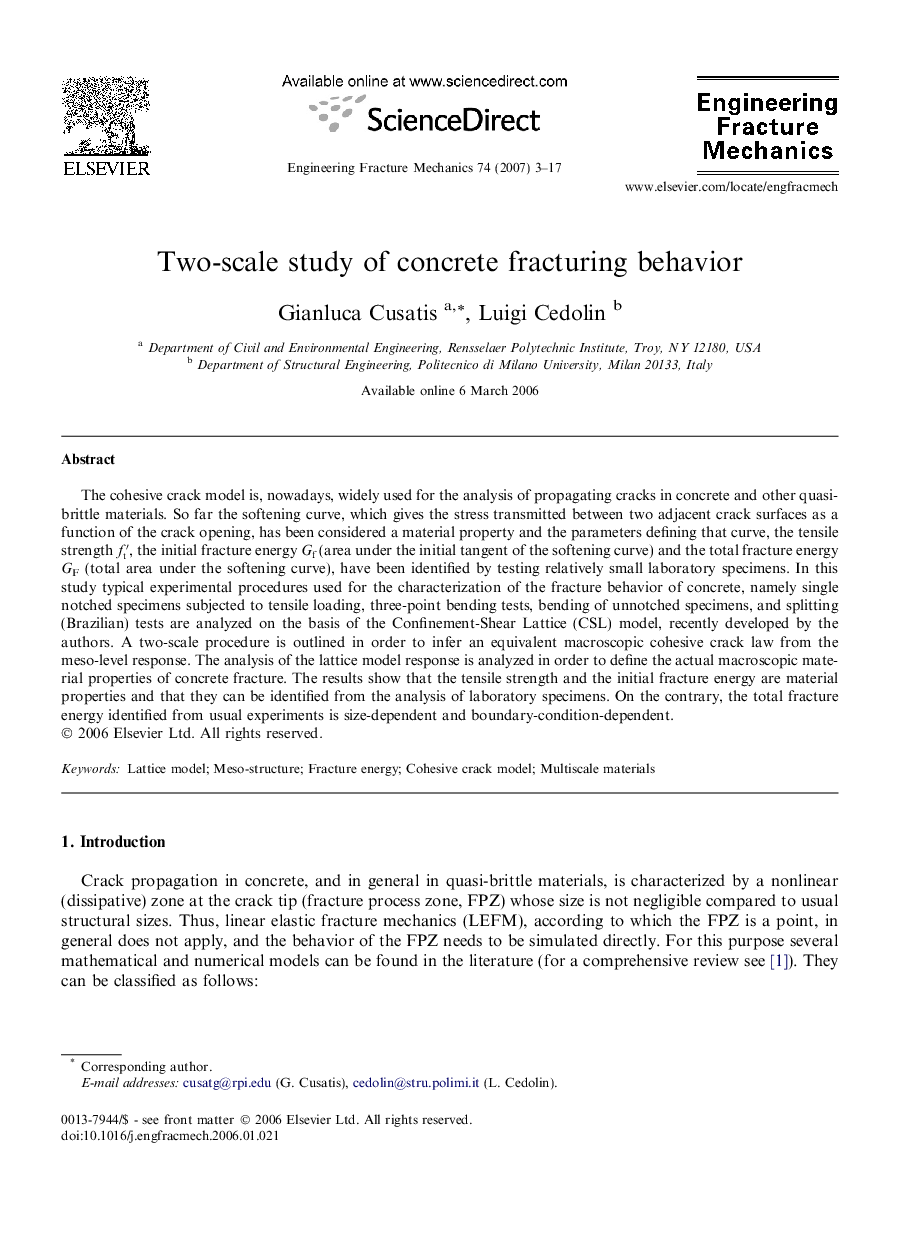| کد مقاله | کد نشریه | سال انتشار | مقاله انگلیسی | نسخه تمام متن |
|---|---|---|---|---|
| 775890 | 1463148 | 2007 | 15 صفحه PDF | دانلود رایگان |

The cohesive crack model is, nowadays, widely used for the analysis of propagating cracks in concrete and other quasi-brittle materials. So far the softening curve, which gives the stress transmitted between two adjacent crack surfaces as a function of the crack opening, has been considered a material property and the parameters defining that curve, the tensile strength ft′, the initial fracture energy Gf (area under the initial tangent of the softening curve) and the total fracture energy GF (total area under the softening curve), have been identified by testing relatively small laboratory specimens. In this study typical experimental procedures used for the characterization of the fracture behavior of concrete, namely single notched specimens subjected to tensile loading, three-point bending tests, bending of unnotched specimens, and splitting (Brazilian) tests are analyzed on the basis of the Confinement-Shear Lattice (CSL) model, recently developed by the authors. A two-scale procedure is outlined in order to infer an equivalent macroscopic cohesive crack law from the meso-level response. The analysis of the lattice model response is analyzed in order to define the actual macroscopic material properties of concrete fracture. The results show that the tensile strength and the initial fracture energy are material properties and that they can be identified from the analysis of laboratory specimens. On the contrary, the total fracture energy identified from usual experiments is size-dependent and boundary-condition-dependent.
Journal: Engineering Fracture Mechanics - Volume 74, Issues 1–2, January 2007, Pages 3–17